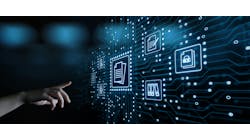Digitalization has increased exponentially over the last few years, with virtual connections and collaborations playing an important role in the electronics procurement process. Gone are the days when buyers could do their jobs with manual processes, disparate software systems and siloed spreadsheets. Today’s professionals need digital tools to automate repetitive tasks, provide real-time order visibility and foster transparency—both internally and with external business partners.
The remote work trend also comes into play here. With more team members working from home or offsite locations, organizations need the right digital tools to keep those associates connected and productive. Rather than spending their days poring over spreadsheets, looking up part numbers and sending emails, today’s buyers can tap into a plethora of new tools that help them reduce manual work and focus on more important, value-added projects.
“Digitalization has streamlined many of the processes that used to take a lot of time and energy to complete,” says Kyle Nelson, manager, demand planning at DigiKey. "Today’s electronics buyers can focus on higher-level analytics and building solid relationships with their suppliers.”
5 Digital Tools for Your Procurement Toolbox
Here are five modern tools that help procurement departments achieve those goals and get more done with less:
- Enterprise resource planning (ERP). These platforms help teams manage budgets, negotiate contracts and monitor inventory levels, among other functions. A centralized command center, ERP provides the finance, inventory and manufacturing management backbone for the company.
- E-procurement platforms. E-procurement applications help streamline the end-to-end procurement process from requisition to payment. When integrated with an ERP (or, when the ERP itself incorporates e-procurement out of the box), it helps companies save money, improve data visibility and improve efficiency. “We’re at a point where ERP developers are building more e-procurement functionality right into their platforms,” Nelson says. “This really facilitates the process for companies, which no longer have to build their own or add on third-party e-procurement applications.”
- Vendor management applications. Just like it sounds, vendor management applications (or vendor management software) help simplify and automate an organization’s vendor relationships. Acting as central repositories for vendor data, these applications eliminate the need for spreadsheets and give all internal stakeholders access to the same, unified information. “When you can easily catalog your vendors and include important details like contract terms—and then access that data as needed—it makes the vendor management task much easier,” Nelson says.
- Financial management tools. Along with ERP, there are also a number of digital financial management tools that buyers can use to track spending, budgets and other financial metrics. For example, there are cloud-based applications managing sourcing, invoicing and analytics; strategic sourcing tools for identifying potential cost savings and negotiating better deals; and business intelligence (BI) platforms for analyzing spend data.
- Forecasting and demand planning applications. Accurately predicting component and material demand is an ongoing challenge for buyers, but there are some new tools on the market to help them avoid stockouts and/or excess inventory. “Finding solutions that can manage multiple warehouses, forecast appropriately and infuse that ‘predictive element’ into your demand outlook is very important,” says Nelson, who adds that DigiKey has invested substantially in its own forecasting and demand applications with an eye on helping its customers leverage market trends, historical sales and even weather data to hone their own forecasts and demand planning.
Leveraging Emerging Technologies
Nelson says DigiKey has also been working to centralize its data—marketing data, information about sales, inventory counts, etc.—to ensure easy accessibility for users. It leverages the tools mentioned above in its own operation, which is also using cloud-based BI tools to create models that, in the past, took weeks or even months to build out.
“We’re always looking for solutions that help us act faster,” Nelson says. “We can put together visuals and models in an afternoon now, and then use those insights to help procurement planners do their jobs.”
Looking ahead, Nelson sees artificial intelligence (AI) playing an even bigger role in the automation of routine tasks and machine learning (ML) supporting even more accurate forecasting and predictive modeling. These are just some of the digital tools that buyers should be thinking about in 2024 and beyond. “Anytime you can leverage these different types of emerging technologies,” he adds, “it results in higher service levels for your own customers.”








